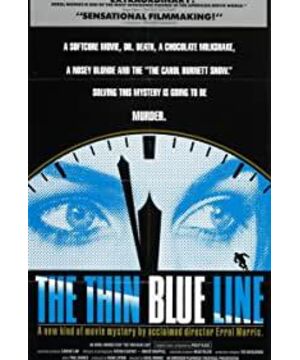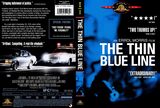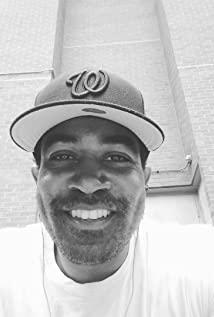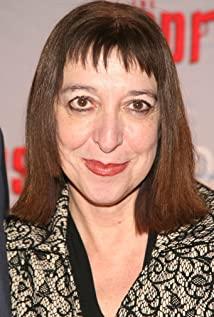"The Thin Blue Line" is regarded as the representative work of "new documentary film". The film's unique shooting and editing techniques and novel narrative strategies have brought profound influence and discussion, which has injected into the development of later documentaries. new living water.
The film uses a semi-documentary method of reproducing the facts to track an unjust case of murdering a police officer, and uses a simulated method to "reproduce the truth" and restore the process of the case. When the people involved in the case gave oral histories, the film stylized the virtual content of the rehearsal. This way of presentation uses the "distancing" effect of Brecht's dramatic system to deliberately reveal the traces of human making, so that these scenes have a unique appearance. It is an introspective quality—to tell the audience unmistakably that this is an extrapolation of a hypothetical situation, not a record of what actually happened. In fact, this arrangement enhances the authenticity of the recorded events, and the restoration of the space scene based on the original event limits the audience's extra imagination space, so as to prevent them from deviating from the facts through self-replenishment. In addition, the real representation chosen by the director is not only about the rhetoric and scenes, but the rendition of different versions of the scene, in order to remind the audience that what they see is not the truth itself, but a representation of a possibility, which highlights the objectivity. and fairness. In the end, with a step-by-step derivation, the entire case was subdivided into a fascinating and fascinating way, until the truth came out and ushered in the truth. For a long time in the past, documentary films were strongly opposed to fiction, emphasizing "capturing the reality that is happening in front of you", and it was only later that people realized that the camera was really powerless in the face of "some kind of reality". However, the shooting method of "real reproduction" in the documentary film "The Thin Blue Line" weakens the subjective guidance. By recording and performing real materials to convey information and restore the truth, it can achieve a balanced performance of pursuing the development of events. Because of this, true reproduction has innovated traditional records, increased the scope of film records, and played an important role in the development of documentaries. In addition to the technique of "true reproduction", the filming has other tastes worthy of taste. In the process of filming the character's dictation, the film always uses a close-up shot to place the character in the center of the picture, and concentrates bright light on the character, which plays an emphatic role. A well-balanced and stable closed composition keeps the audience's attention focused and not distracted. When shooting the rehearsal scene, the director is good at supplementing the case materials and details with close-up shots, and is good at creating suspense with limited and incomplete shots, so as to attract the attention and thinking of the audience. In the documentary, objects with metaphors are also filmed to connect different scenes, such as the cigarette butts in the ashtray to convey the passage of time or the stagnation (it also shows the time-consuming and obstructed process of the case investigation), and the flashing red police lights imply Awake and trial, etc., such images appear several times, which not only promotes the development of events, but also sets off the atmosphere of the film.
The Thin Blue Line is influenced by postmodernism, subverting the original method of recording. The film allows the audience to actively explore the facts while watching the story, has a sense of participation, and deepens the memory points, so it is highly sought after and loved. It is also because of its superb shooting techniques that it still has important significance for discussion and reference.
View more about The Thin Blue Line reviews









